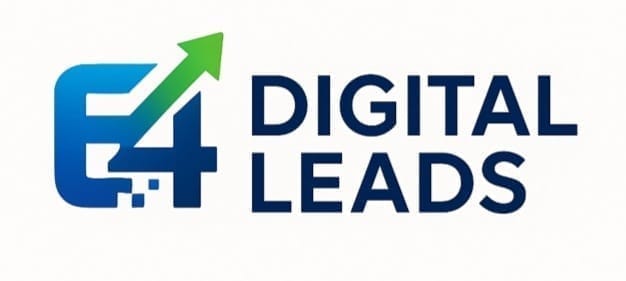
SaaS SEO Trends in 2025: What We Learned from 10 Brands
Search Engine Optimization (SEO) for SaaS brands has entered a new era in 2025. With AI transforming how content is created and consumed, and Google focusing more on experience and authority, the rules have changed. As a B2B and SaaS marketing agency, we studied 10 fast-growing SaaS brands across the UK, USA, and Australia to uncover the most important trends shaping SEO this year.
If you’re a SaaS founder, start-up, coach, or consultant, this guide is your roadmap to building SEO that drives real results — not just traffic, but leads.
1. AI-Powered SEO Is No Longer Optional
In 2025, AI tools are at the core of high-performing SaaS content. Brands like HubSpot now use GPT-style content workflows to generate topic clusters, outline articles, and optimize tone based on audience intent. This approach speeds up content creation while keeping it relevant and human-centred.
If you're not using AI to support your content, whether for keyword research, outlines, or optimization, you're falling behind. But don’t just automate; blend AI tools with your brand voice and expertise.
2. E-E-A-T Is King
Google’s emphasis on Experience, Expertise, Authoritativeness, and Trustworthiness (E-E-A-T) is reshaping how content is ranked. Top SaaS brands like Ahrens are succeeding because they hire real experts, not ghost-writers, to write their blogs. They showcase author bios, link to credentials, and focus on helpful, accurate advice.
For B2B and SaaS brands, this means prioritizing quality over quantity. Use your name, photo, and real experience to establish authority. Don't hide behind generic blog voices.
3. Product-Led Content Outperforms TOFU Fluff
Brands like Notion are winning organic traffic by writing product-led content that educates users while demonstrating product value. Instead of generic “how to be more productive” blogs, they write “how to plan your week using Notion” and rank for it.
In 2025, SaaS content must solve real problems with your product baked in. Forget fluffy top-of-funnel blogs that never convert lean into intent-driven topics and show your tool in action.
4. Interactive Content Keeps Visitors Longer
Engagement now plays a massive role in SEO rankings. Tools like Typeform are using interactive calculators, quizzes, and embedded demos to increase session time and dwell rate, two metrics Google uses to assess content quality.
To win in 2025, turn your blog into more than text. Use videos, templates, downloads, and interactive embeds to keep readers scrolling and clicking.
5. Voice Search and Conversational SEO Are Rising
With voice search and AI engines like ChatGPT and Google Gemini shaping how users find answers, optimizing for conversational queries is essential. Brands like Grammarly are now formatting their content to answer questions directly with FAQ sections, natural language headers, and clean structure.
Write the way people speak. Use headings like “How do I build a SaaS funnel in 2025?” and answer it right below. That’s how you win voice search and feature snippets.
6. Long-Tail Keywords Deliver Real Leads
We saw that high-converting SaaS traffic comes from specific, long-tail keywords, not broad, competitive ones. Monday.com, for example, ranks for terms like “best project management tool for remote designers” instead of just “project management software.”
Don’t chase volume. Target phrases with buyer intent — even if only 90 people search it monthly, they’re your ideal customers.
7. Structured Data Helps You Appear in AI Search
AI search engines now rely heavily on structured data to source answers. Brands like Zapier format their blog posts with schema markup, clean heading hierarchies, and question-answer formats that make it easier for Google and Gemini to display them in results.
To prepare for this shift, use tools like RankMath or Schema.org to add markup to your site. The clearer your structure, the better your visibility.
8. Zero-Click SERPs Are a Reality — Adapt or Be Ignored
Many searches now end without a click. Google or ChatGPT answers the question right on the results page. To survive this, SaaS brands like Canva are doubling down on branded keywords, user-specific tools, and in-post value like lead magnets and demos.
Give users a reason to click , whether it’s a downloadable template, a quiz, or an exclusive strategy guide.
9. Refreshing Old Posts Outperforms Publishing New Ones
Instead of constantly writing new content, brands like ClickUp are updating and re-optimizing their top 10 blog posts monthly. This boosts rankings faster, builds authority, and keeps their content fresh for AI search.
Audit your top-performing posts quarterly. Refresh stats, rework headlines, and update CTAs to reflect your current offers.
10. SEO + Social = Traffic Explosion
Brands like Loom and Figma don’t just publish blogs; they turn each post into a LinkedIn carousel, a TikTok voiceover, and an email blast. This cross-channel amplification drives traffic back to their website and increases backlinks organically.
In 2025, smart distribution is part of SEO. Repurpose your blog content and push it across every platform your audience hangs out on.
Final Thoughts
SEO in 2025 is about quality, intent, and engagement. The SaaS brands winning today are those that blend expert-led content, AI tools, and product-driven storytelling to reach, educate, and convert.
At E4 Digital Leads, we help B2B and SaaS brands turn their content into qualified leads using funnels that convert, even without paid ads.
Get the latest insights from the marketing world.

A blog that focuses on providing practical tips and strategies for businesses to improve their marketing and sales efforts.



